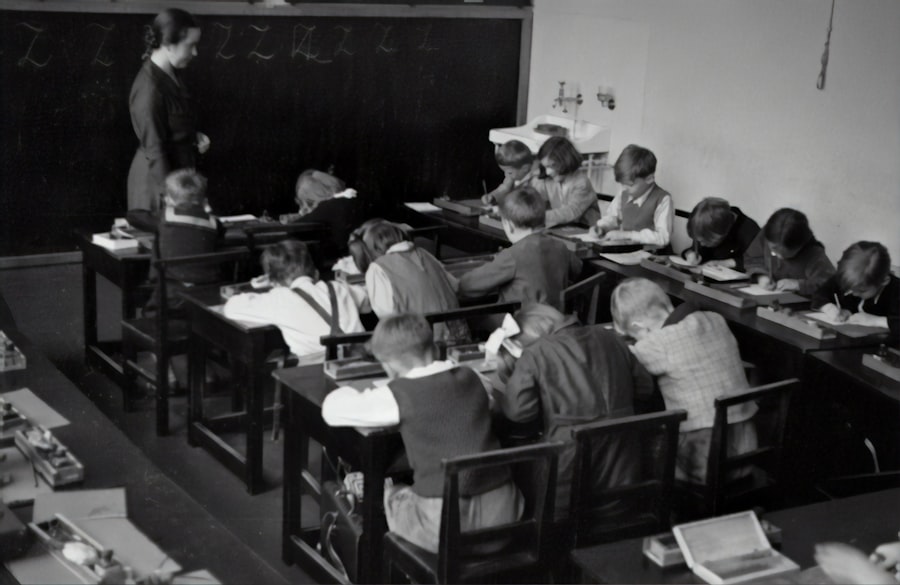Mathematics occupies a central place in the American high school education system, not only as a subject to be taught, but also as a key skill that shapes the way we think and solve problems. In today's world, where technology and science are constantly evolving, understanding mathematical concepts is becoming necessary for success in many fields. Students are taught logical thinking, data analysis and informed decision-making through mathematics.
These skills are essential not only for academic success, but also for everyday life, where mathematical literacy is used in finance, engineering, medicine and many other professions. In addition, mathematics plays a key role in the development of critical thinking. Students are encouraged to ask questions, explore solutions, and develop their own problem-solving strategies.
This process not only helps them master mathematical concepts, but also prepares them for the challenges they will face in future academic and professional settings. In this sense, mathematics is not just a set of rules and formulas, but a way of thinking that enables students to face complex problems and find innovative solutions.
Key Takeaways
- Mathematics is considered a core subject in American high schools because of its importance in developing analytical thinking and problem solving.
- Mathematics instruction in American high schools includes basic mathematical disciplines such as algebra, geometry, statistics, and probability.
- The Standards for Mathematics Education in American High Schools set clear goals and expectations for each level of education to ensure consistency in instruction.
- American high schools encourage interest in mathematics through various activities such as competitions, clubs and extra courses.
- Different approaches to mathematics learning in American high schools include the use of technology, group work, and practical applications of mathematics in everyday situations.
The structure of mathematics instruction in American high schools
Mathematics instruction in American high schools covers a wide range of topics and levels of difficulty, adapted to the different abilities and interests of students. Typically, classes are divided into several core areas, including algebra, geometry, trigonometry, and statistics. Students typically begin with basic algebra in the first year of high school and then move on to geometry and advanced algebra.
This structure allows for the gradual acquisition of more complex concepts, which is crucial for understanding more advanced mathematical topics. In addition to the traditional approach, many schools offer a variety of courses that focus on real-world applications of mathematics. For example, courses such as financial mathematics or statistics can help students see the practical value of mathematical skills.
There are also advanced courses such as AP (Advanced Placement) math, which allow students to earn college credit while still in high school. This variety of courses allows students to choose the path that best suits their interests and future plans.
Standards for Mathematics Education in American Secondary Schools

In the United States, standards for mathematics education are set to ensure that all students receive a quality education that prepares them for the challenges of the future. These standards vary from state to state, but most of them rely on the Common Core State Standards, which define what students should know and be able to do at the end of each school year. These standards emphasize understanding of concepts, application of knowledge, and problem-solving ability, rather than mere mechanical memorization of formulas.
Implementation of these standards requires teachers to use innovative teaching methods that include collaborative learning, projects, and technology. Students are encouraged to explore mathematical concepts through practical examples and real-life situations. This approach not only improves understanding of mathematics, but also motivates students to actively participate in their education.
Through these standards, American high schools strive to create a generation of mathematically literate individuals who are ready to face the challenges of modern society.
How America's High Schools Foster an Interest in Math
American high schools use a variety of strategies to stimulate students' interest in mathematics. One of the most effective ways is to integrate technology into teaching. Using computers, tablets and specialized software tools allows students to visualize mathematical concepts in an interactive way.
For example, programs for graphing functions or simulating geometric shapes help students better understand complex ideas. This type of interactive learning makes mathematics more accessible and interesting. In addition to technology, many schools organize an extracurricular activity that focuses on mathematics.
Maths competitions, workshops and clubs provide students with opportunities to further engage and develop their skills outside of the classroom. These activities not only strengthen mathematical knowledge, but also encourage teamwork and friendship among students. Through these initiatives, schools create a positive environment that motivates students to explore the world of mathematics and develop a passion for this subject.
Diverse Approaches to Mathematics Learning in American High Schools
In American high schools, there are many different approaches to learning mathematics that are adapted to the needs of different students. One popular approach is the constructivist model, which emphasizes active learning through exploration and discovery. In this model, students are encouraged to ask questions, explore solutions, and develop their own problem-solving strategies.
This approach helps students develop a deeper understanding of mathematical concepts and connect them to real life. Another approach is differentiated learning, which focuses on tailoring instruction to the needs of individual students. Teachers use a variety of teaching methods to accommodate different learning styles and ability levels among students.
For example, some students may learn better through visual materials, while others prefer hands-on activities or working in groups. This approach allows each student to progress at their own pace and develop their math skills in a way that works best for them.
Problems and challenges in teaching mathematics in American high schools

Although the teaching of mathematics in American high schools is well structured, it faces numerous problems and challenges. One of the main challenges is the lack of resources and support for teachers. Many teachers struggle with workload, lack of materials or training to help them teach math more effectively.
This lack of resources can negatively affect the quality of teaching and student motivation. Also, there is a problem with students' attitudes towards mathematics. Many students find mathematics difficult or boring, which can lead to reduced interest and engagement during class.
This negative attitude may be the result of previous experiences or pressure from the environment. To overcome these challenges, it is important that schools develop strategies that will help create a positive environment for learning mathematics and support teachers in their work.
The impact of mathematics education in American high schools on future careers
The mathematics education students receive during high school has a significant impact on their future careers. In today's world, where analytical skills are highly valued, knowledge of mathematics can open doors to various professions. Many science, technology, engineering and mathematics (STEM) jobs require a solid understanding of mathematical concepts.
Students who are well trained in mathematics are more likely to succeed in these fields and achieve their professional goals. In addition to STEM careers, math skills are also useful in business, economics, and the social sciences. Understanding statistics can help individuals make informed decisions based on data, while analytical thinking can improve problem-solving ability in a variety of contexts.
In this sense, mathematics education not only prepares students for specific careers, but also empowers them with skills that are applicable in a wide range of professions and life situations.
If you are interested in how mathematics in high schools in America differs from what we are used to in Serbia, you may also be interested in how young people from Serbia can experience the American education system firsthand. On the site J1 Alumni you can find information about the Au Pair program, which allows young people to live and work in America, often helping to educate children in the households where they stay. This can be an excellent opportunity to compare the approach to mathematics and other subjects in different education systems.
FAQs
1. What types of high schools are there in America?
There are public high schools, private high schools, specialized high schools (eg art schools, technical schools) and boarding high schools.
2. What does mathematics teaching look like in American high schools?
Mathematics instruction in American high schools spans a variety of levels, including algebra, geometry, trigonometry, statistics, and calculus. Students usually have math lessons every day or several times a week.
3. How is math graded in American high schools?
Grades in math in American high schools are usually assigned based on tests, homework, projects, and class participation. Also, students usually have a final exam in mathematics.
4. Is it possible to take additional math classes in American high schools?
Yes, many high schools in America offer extra math classes or extra support for students who struggle in this area. There are also private math lessons that students can take outside of school.
5. How do American high schools prepare students for further education in mathematics?
American high schools provide a foundational education in mathematics so that students acquire the necessary skills for further education in this field. Also, students have the opportunity to take advanced math courses that prepare them for college education.

